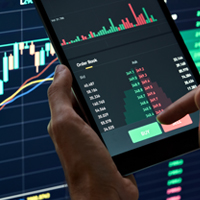How Much Money Can One Make or Lose in Futures Trading?
Published by Sharekhan Education | August 8, 2023

By Prem Punjabi | Sharekhan Education
Introduction :
Futures trading is a type of trading that involves buying and selling contracts for the delivery of a specific underlying asset at a predetermined price and date in the future. These assets can include commodities like Gold, Silver, and Crude Oil, as well as financial instruments like stocks and currencies.
Advantages of futures trading :
One of the key advantages of futures trading is that traders can use leverage to control a larger position with a smaller amount of capital. This is because traders are only required to put up a margin, which is typically a percentage of the total value of the contract. For example, if a trader wants to control a futures contract with a value of Rs. 9,00,000, they might only need to put up a margin of Rs. 2,00,000.
This leverage can increase the potential for profits (as well as losses) in futures trading. For example, if the trader buys a futures contract at Rs. 18,000 and the price later rises to Rs. 18,500 they could sell the contract and make a profit of (Rs. 500 x Lot Size) per contract. If the trader is holding multiple contracts, the potential profits can be multiplied accordingly.
However, if the price of the underlying asset moves against the trader’s position, they can incur losses. For example, if the trader bought a futures contract at Rs. 18,500 and the price later falls toRs. 18,300, they would have a loss of (Rs. 200 x Lot size) per ontract. Again, if the trader is holding multiple contracts, the potential losses can be multiplied.
Risks in Futures Trading :
Futures trading can be highly volatile and unpredictable, with prices influenced by a variety of factors such as global economic events, weather patterns, and supply and demand dynamics. Traders should have a solid understanding of the markets, a clear trading strategy, and a disciplined approach to risk management to minimize their potential losses and maximize their chances of success.
One of the key risk management strategies in futures trading is the use of stop-loss orders, which automatically close out a position if the price moves against the trader beyond a certain point. This can help limit potential losses and protect a trader’s capital.
It is also important for traders to understand the role of margin and leverage in futures trading, and to ensure that they have sufficient capital to cover potential losses. Traders should never risk more than they can afford to lose and should always have a clear understanding of the risks and potential rewards involved in futures trading.
Conclusion :
Overall, futures trading can be a potentially lucrative activity for experienced and disciplined traders, but it also carries significant risks. Traders should always approach futures trading with caution. They should take steps to minimize their potential losses while maximizing their chances of success.
Disclaimer :
Investment in securities market are subject to market risks, read all the related documents carefully before investing. For detailed disclaimer and registered office details visit link – https://www.sharekhan.com/disclaimer/Sharekhan_Education.html
Learn the secrets of professional trading from experts for Stocks, Futures and Options Trading, and make profits investing today!




